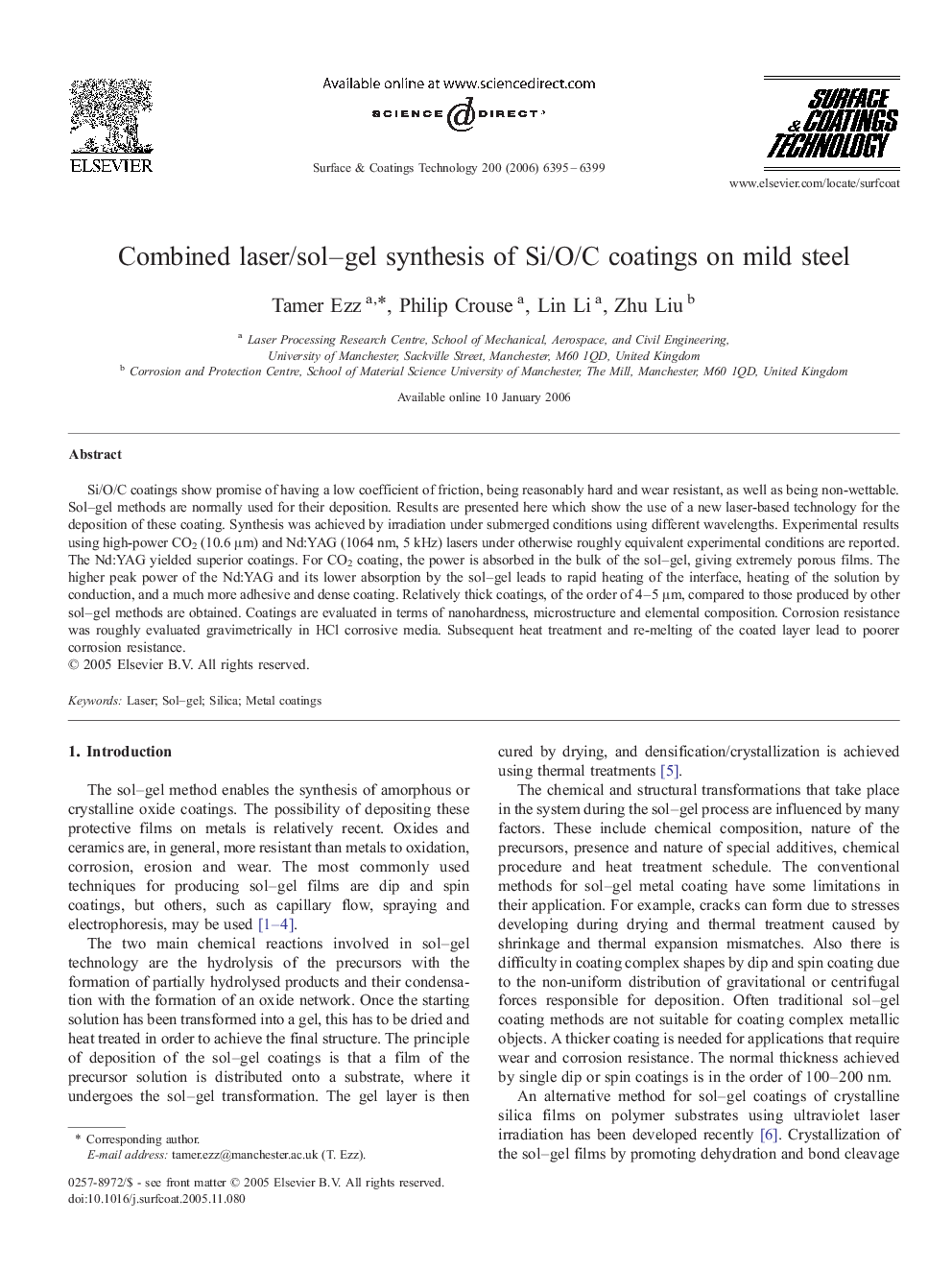| Article ID | Journal | Published Year | Pages | File Type |
|---|---|---|---|---|
| 1661926 | Surface and Coatings Technology | 2006 | 5 Pages |
Si/O/C coatings show promise of having a low coefficient of friction, being reasonably hard and wear resistant, as well as being non-wettable. Sol–gel methods are normally used for their deposition. Results are presented here which show the use of a new laser-based technology for the deposition of these coating. Synthesis was achieved by irradiation under submerged conditions using different wavelengths. Experimental results using high-power CO2 (10.6 μm) and Nd:YAG (1064 nm, 5 kHz) lasers under otherwise roughly equivalent experimental conditions are reported. The Nd:YAG yielded superior coatings. For CO2 coating, the power is absorbed in the bulk of the sol–gel, giving extremely porous films. The higher peak power of the Nd:YAG and its lower absorption by the sol–gel leads to rapid heating of the interface, heating of the solution by conduction, and a much more adhesive and dense coating. Relatively thick coatings, of the order of 4–5 μm, compared to those produced by other sol–gel methods are obtained. Coatings are evaluated in terms of nanohardness, microstructure and elemental composition. Corrosion resistance was roughly evaluated gravimetrically in HCl corrosive media. Subsequent heat treatment and re-melting of the coated layer lead to poorer corrosion resistance.
